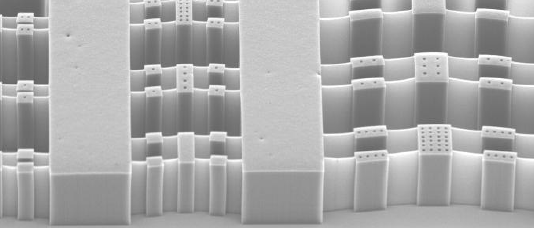Strengthening fragile forests of carbon nanotubes
October 31, 2012
Brigham Young University (BYU) researchers have created stronger microstructures that can form precise, tall and narrow 3-D shapes for microelectromechanical systems (MEMS).
MEMS are ultra-tiny devices, often built on the scale of microns (millionths of a meter). Conventional MEMS structures tend to be made out of silicon-based materials familiar to the micro-electronics industry, but this ignores a suite of useful materials such as other semiconductors, ceramics, and metals.
To break the MEMS materials barrier, the researchers devised a new production process called carbon nanotube templated microfabrication (CNT-M). It uses patterned, vertically aligned carbon nanotube arrays called forests as a 3-D microfabrication scaffold.
With this scaffold, the researchers can create precise, tall and fine-featured microstructures. But the forests are extremely fragile. To make them hardier, the team replaced the air spaces between the carbon nanotubes with a filler material.
The team has used their new CNT-M framework to fabricate metal components from tungsten, molybdenum and nickel. These metals provide desirable properties for MEMS applications and components, including high electrical and thermal conductivity, high melting temperatures, resistance to corrosion, low thermal expansion and hardness.
The BYU team’s advances open the door for manipulating matter in novel ways that optimize efficiency, performance and cost across a range of fields, including medicine, imaging, computing, materials synthesis, chemical synthesis, and printing.
Most biological and biomedical processes occur at the nanoscale. Developing models and templates at this scale enables scientists to interact with, control and leverage the unusual physical, chemical, mechanical, and optical properties of materials in naturally tiny systems.
Already, the BYU researchers have successfully used their new technique to make chemical detection devices that can validate chemical reactions during pharmaceutical production. Team member Robert C. Davis, PhD , imagines that one day CNT-M might even play a role in devising new longer-lasting batteries.
